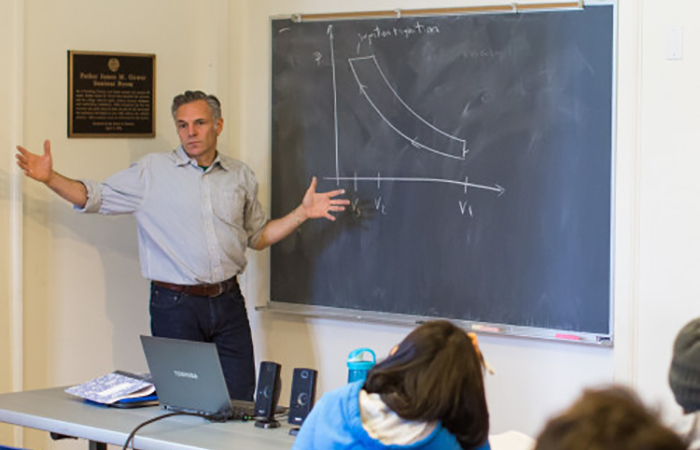Our CEO Kay Aikin wrote a guest blog for Microgrid Knowledge the premier industry newsletter focused on Microgrid technologies and policy.

MRRA Microgrid
Toward Market-based Microgrid Control Systems
The largest machine on earth is often said to be our electrical grid. By the end of 2016 there were some 7600 power plants greater than 1 MW with many times more, smaller resources and an even larger number of control systems. The grid is truly a complex machine that is made up of systems collected into ever larger systems. In the controls world this is called a systems of systems. This is the ultimate in complexity and is true on all large systems like the electric grid and ecological systems.
The advantage of microgrids is they help us tame the complexity the grid by limiting the number of possible interactions within the grid. Smaller more predictable systems are less prone to unintended consequences as can happen in the electrical grid like the Northeast blackout of 2003. However, even with microgrids and the emergence of energy management systems and smart devices the control networks of a microgrid will become even more complex. But this complexity can be used to build better systems as Ecologist Eric Berlow says the more you “embrace complexity the better chance you have finding simple answers”.
A great Ted talk illustrating this concept can be seen at: https://www.ted.com/talks/eric_berlow_how_complexity_leads_to_simplicity
It has been shown that market-based systems can be amazingly stable in complex environments because of the many naturally balancing feedback loops within the system. Using this complexity, to lead to simplicity. In the electrical engineering field, the GridWise Alliance has called this idea of market-based system “Transactive Energy”. Much of the research in this area has been done by the Pacific Northwest National Laboratory and one of the successful trials was the Olympia Peninsula Project (OPP) consisting of a field demonstration of price signal-based control of distributed energy resources. The demonstration showed that market-based control was able to manage distribution constraints and reduce peak loads. This was followed with the Pacific Northwest Demonstration Project (PNDP) ending in 2015.
You can consider there to be three main methods for implementing Transactive Energy control systems applicable to microgrids including:
- Centralized (top down)
- Centralized (auction-based)
- Distributed (edge-based)
The difference between the Olympia Peninsula and Pacific Northwest Project was that OPP was a double auction very similar to the current ISO systems and PNDP was a top down model where demand response assets and distributed energy resources were optimally dispatched by individual “transactive” nodes using two-way communications. Both both were generally more centralized paradigms.
The third transactive approach is a fully distributed edge control method that relies on pricing signals reflecting the prediction of future conditions creating a different price at many different scales. Lower-level devices (or entire systems) respond to those pricing signals from higher levels. This method is currently being researched at Maine’s Brunswick Landing Microgrid Project (add link) for the Department of Energy.
While the first two transactive energy approaches have shown promise in that they have been able to balance energy demand, lowering peak demand and managing grid congestion they rely on large two-way communication networks that are particularly vulnerable to cyber assaults.
This cyber vulnerability should be a concern for the microgrid community because for a wide spread deployment of a system of microgrids this communication vulnerability is of particular concern to today’s infrastructure experts.
The edge-based system being researched at Brunswick Landing has pricing signals (potential of 10 or more different grid scales) are continuously re-calculated, only travel in a downward direction and are acted upon only by edge devices have promise, using the “power of complexity to lead to simplicity” Since the scope of influence of a single node is typically only one or two degrees of separation as described by Eric Berlow, this limits the computing power required to calculate the system state and provides for enhanced capabilities using advanced artificial intelligence techniques and limits security risks with limited communications routes.
An effective transactive edge-based energy system can provide increased resilience, versatility, reliability and flexibility when used not only in microgrids but the greater electrical grid.
Kay Aikin is CEO of Introspective Systems, a complex systems architecture and engineering company in Portland Maine. Introspective Systems is the project lead at the Brunswick Landing Microgrid Project researching edge-based transactive energy networks.



